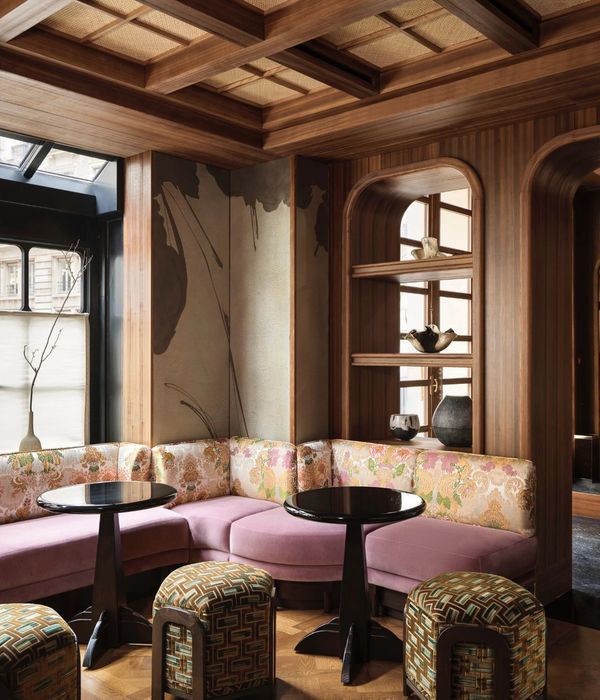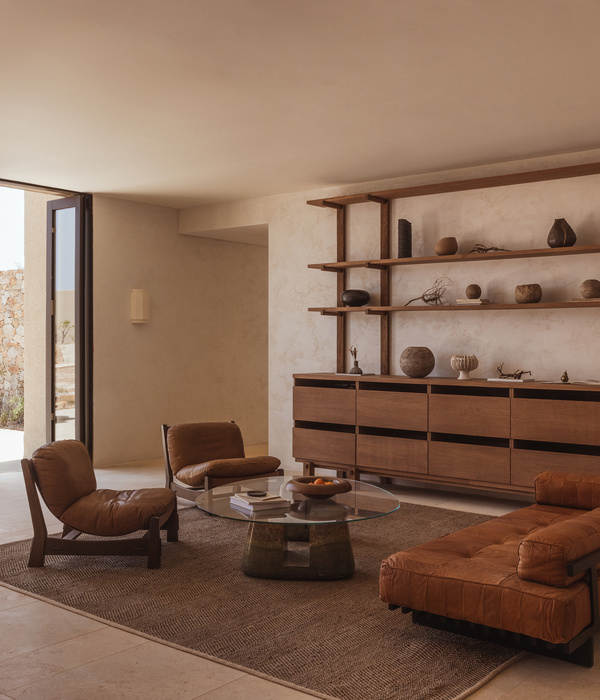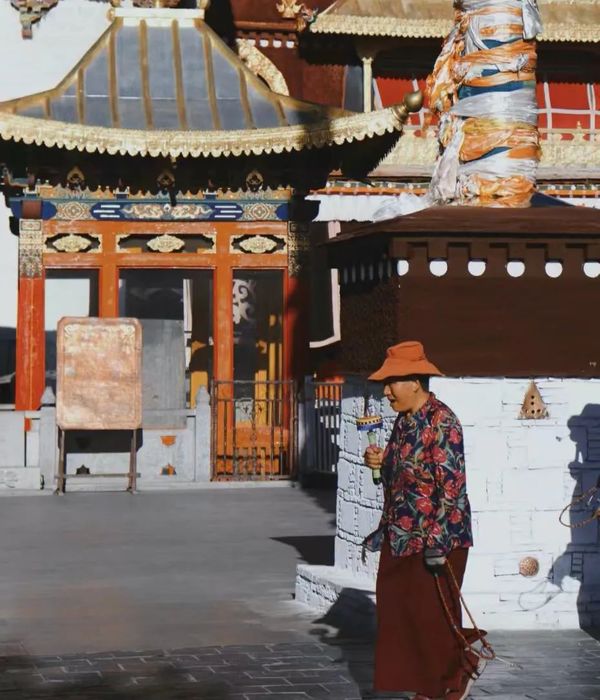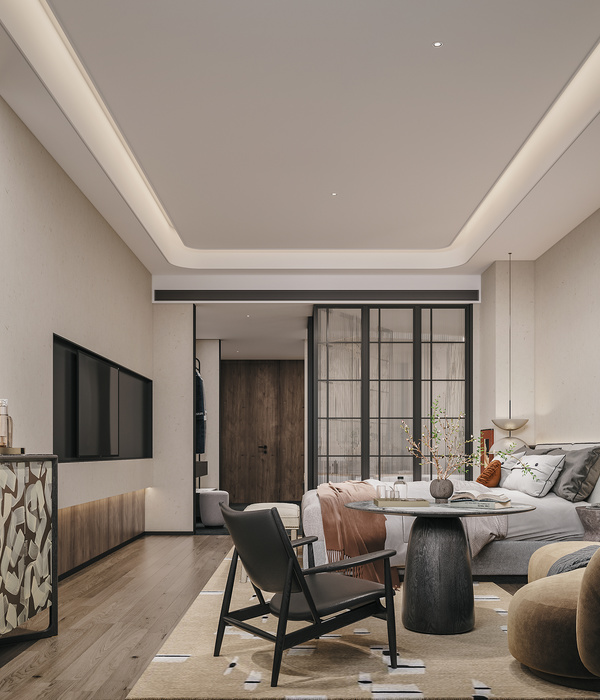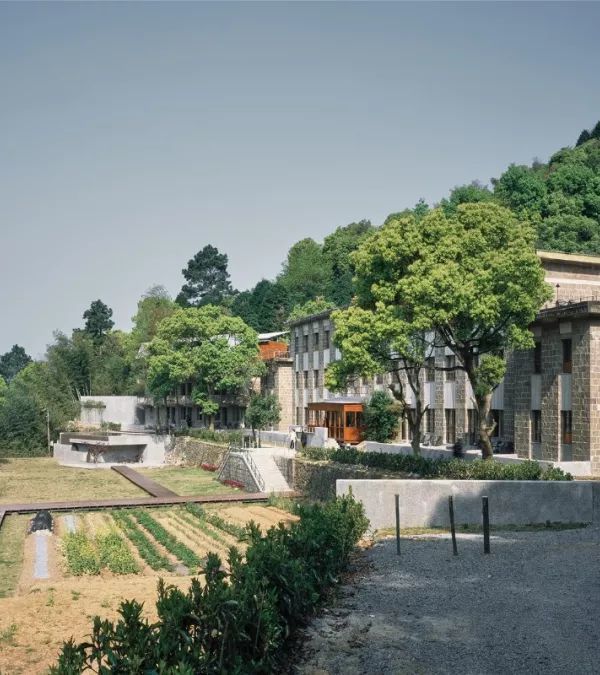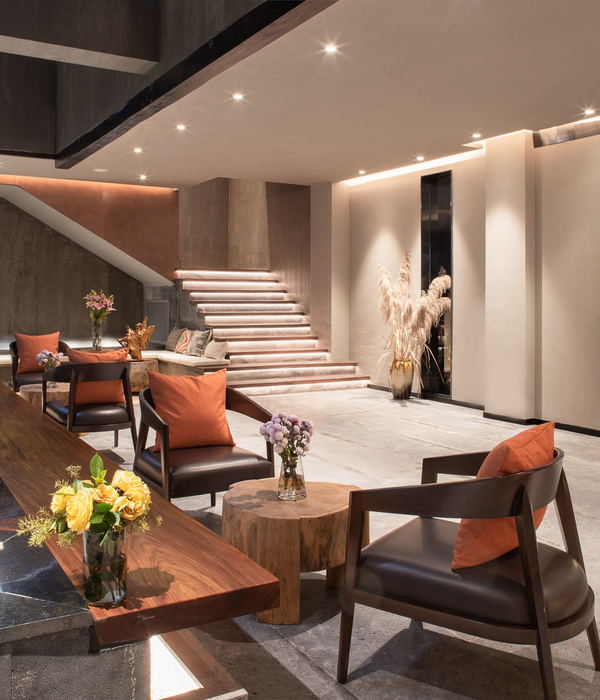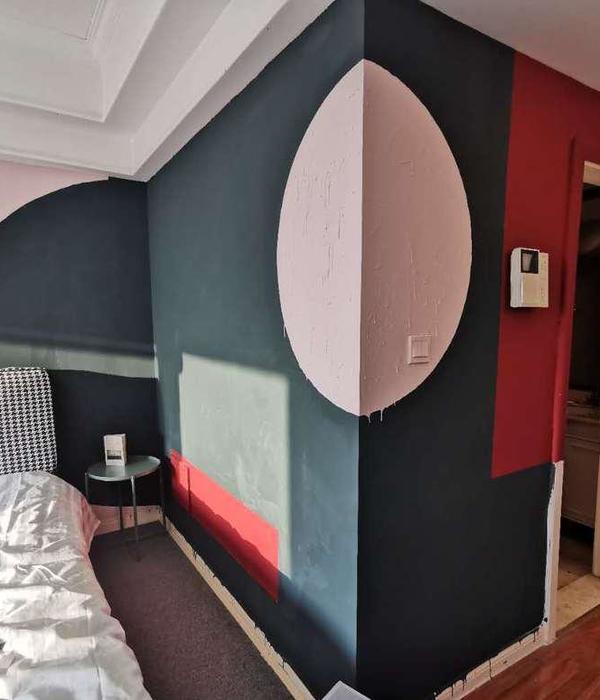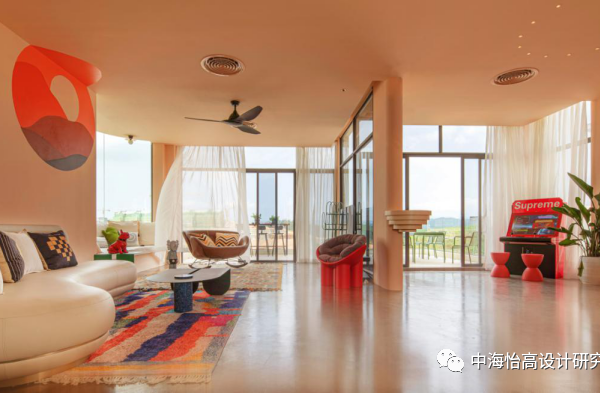The site of the lodge, once a completely barren tract of land, void of trees, shrubs, wildlife and buildings, was formerly a working farm. The architectural narrative for the lodge had to be crafted by looking beyond the site’s borders rather than within them, to the neighbouring villages.
A local vernacular emerged, while wandering through these villages, that centred around a rather jumbled and informal symbiosis. Well-worn cobbled streets and alleyways interlace the homes, locally known as kothis, and other buildings, bringing a network of life and energy in the form of oxcarts, people, and livestock. Beyond the entrance door of these kothis, exist hidden courtyards in which daily life unfolds for man and livestock. Some of the villages mark their entrance with ancient, grand gates.
That man and wildlife have coexisted peacefully here for thousands of years were of great inspiration, manifesting in a beautiful synthesis that gave rise to our design narrative. “We wanted the property to feel as though it could have been here for decades, nestled between teak forest and the national park. The size of the site and the fall of the land lent themselves to a natural village-like arrangement of buildings near one another”, explains Nicholas Plewman, Lead Architect.
“The layout for our kothis takes its language directly from the nearby villages, with a more haphazard arrangement that fringes a series of meandering streets. It was important to us that the site should maintain its integrity as a working farm at the same time as creating a sense of wilderness. The integration of built structures, natural landscape and the working farm is seamless and organic; not only blurred but enmeshed”, he further notes. The double-storey kothis follow a similar vernacular to those in the local villages whereby a handful of locally sourced and crafted materials have been combined such as sandstone, limestone, plantation teak and stucco.
The traditional verandas which are found on the cooler upper levels of local village homes where the breeze is alive are a feature in every one of our kothis. Even the small swimming pools in each kothi are a nod to authentic Indian stepwells. The “Haveli”, where guests first arrive flanked by a set of impressive ramparts clad with jali screens, marks the entrance to the village, announcing Aramness Gir with its contemporary but locally relevant façade. From there, a courtyard with its characteristic tinkling water feature gives way to a village street, the very heart of the lodge.
While “Architectural Sustainability" is conventionally thought of as denominated by energy and material conservation with only a nod to economic support for local communities, it lies at the heart of our sustainability model. Our focus has been on the integration of both farming and conservation to create a symbiotic relationship with a luxury lodge that creates deep connections to the local culture. This will thus ensure that the conservation of both culture and wildlife in the region is truly sustainable in the long term.
▼项目更多图片
{{item.text_origin}}

